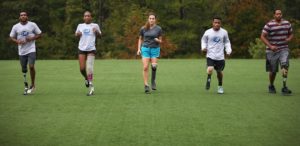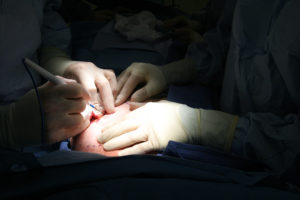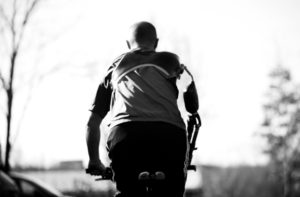The MS Health Law and Strategy program is designed for mid- or senior-career professionals to develop strategy and drive innovation in health. Describe how the MSHLS will contribute to your career objectives. How do you expect this joint degree program to benefit you on a personal and professional level? (500 works max)
As the Director of Health Policy and Strategic Alliances and the in-house lobbyist at the American Orthotic and Prosthetic Association (AOPA), I currently oversee both the advocacy and research portfolios for the organization. I helped design the department I now run under the guiding principle that our policy positions must be supported by the evidence base. It has been my experience that our current healthcare system imposes unnecessary barriers to entry for healthcare technology and arbitrary access challenges for the patients that could most benefit from those advancements.
Since the start of my “official” career in this field in 2008, I’ve witnessed a massive transformation, both for the clinicians delivering healthcare services to patients living with limb loss/difference or limb impairment and the manufacturers of the prosthetic and orthotic devices delivered by those healthcare providers.
I say “official” because I am a second-generation professional working in the Orthotics and Prosthetics field and have been immersed in it all of my life. My father has been a certified prosthetist since before I was born, and I remember fondly the days when attendance at the annual society conferences marked the beginning of our family vacations. In fact, my father attended Prosthetics school at NYU in the early 80s.
Over his 42 years as a prosthetist, he’s seen, and shared with me, exactly how innovation can transform lives. His very first patient wore a wooden prosthetic socket, and he now provides care to patients who have undergone osseointegration surgery and no longer need a traditional socket to successfully ambulate on their prosthetic legs.
Though I am not a clinician providing care to patients, I have built a role for myself in the orthotics and prosthetics field, a role that utilizes the best of my talents and allows me to live a mission-driven, motivated existence with a passion for my purpose. I see the MSHLS program as an opportunity to learn and grow so I can continue to serve this profession to the best of my ability.
What interests me most about this program is the positioning of innovation within the framework of healthcare law and policy fundamentals. I haven’t see any other program in the US that underscores that connection quite like the curriculum offered through this MSHLS. I believe I am the type of candidate that will benefit, specifically, from that balance.
My chosen field sits at the intersection of art and science; it is niche and complex. These factors make it, and the patients it serves, particularly vulnerable to a healthcare system that focuses on service in terms of units rather than value. I am looking forward to gaining new competencies and applying the concepts offered through this program toward efforts to address the challenges facing the orthotics and prosthetics field and the patients it serves now and in the future.
Describe a significant leadership challenge in your life, possibly even a failure. What did you learn and how did this experience shape your professional aspirations?
A significant leadership challenge in my career, thus far, occurred following the acquisition of our family’s prosthetic and orthotic practice, Beacon P&O, in 2015. When we began the process, I was directing our company’s marketing efforts and developing a program to address the access challenges that our patients were facing as a result of inadequate insurance coverage. I had just finished my graduate studies at the UNC Chapel Hill’s School of Journalism and Media and was completing my thesis work on mobilizing patient populations to advocate through online communications platforms. During the program, I realized that my future was in advocacy work, not our family practice.
Over the following year, I assisted my father in every aspect of the due diligence process and facilitated the collaboration necessary to bring us to an offer we were happy to accept. It was the most immersive version of business education possible, with real-world benefits and consequences in its resolution.
Following the acquisition, I was offered the director of operations position for the five-facility organization once owned by my family. Though it had been my intention to leave the company, I accepted the new challenge as another growth opportunity.
After a few months, I realized that the transition was taking a toll on my relationship with my father. We had always met in the middle regarding aspects of our family business; he made decisions about clinical matters and I helped navigate our operational decisions. In this new environment, the line where we used to meet no longer existed. As an example, part of my newly assumed responsibility involved terminating employment of a clinician who had been with the company, and whom I had known, since I was in high school. I found myself entirely lacking the ability to lead effectively through this challenge. The work had grown to be too personal, and I was too emotionally invested.
At this same time, I was receiving recognition for my volunteer work as a Board member for the National Association for the Advancement of Orthotics and Prosthetics (NAAOP), on the Mobility Saves committee for AOPA, as the director of government affairs for the North Carolina Orthotic and Prosthetic Trade Association (NCOPTA), and working with our local amputee support group as a healthcare advocate.
These volunteer roles served to define my strengths as I built my professional identity beyond that of “Eddie White’s daughter.” After ten months under BCP Group ownership, I gave a lengthy notice and began the process of hiring my replacement. I took a leap into the unknown, with no job lined up, but with confidence that I had something to offer the orthotics and prosthetics profession. Shortly after, I landed my dream job at AOPA.
Now, after six years at AOPA, as I explore my next transformation, I find myself poised to take a leap, again. While I remain uncertain as to where I will land, I am confident that I will arrive in that new place a better version of myself.



